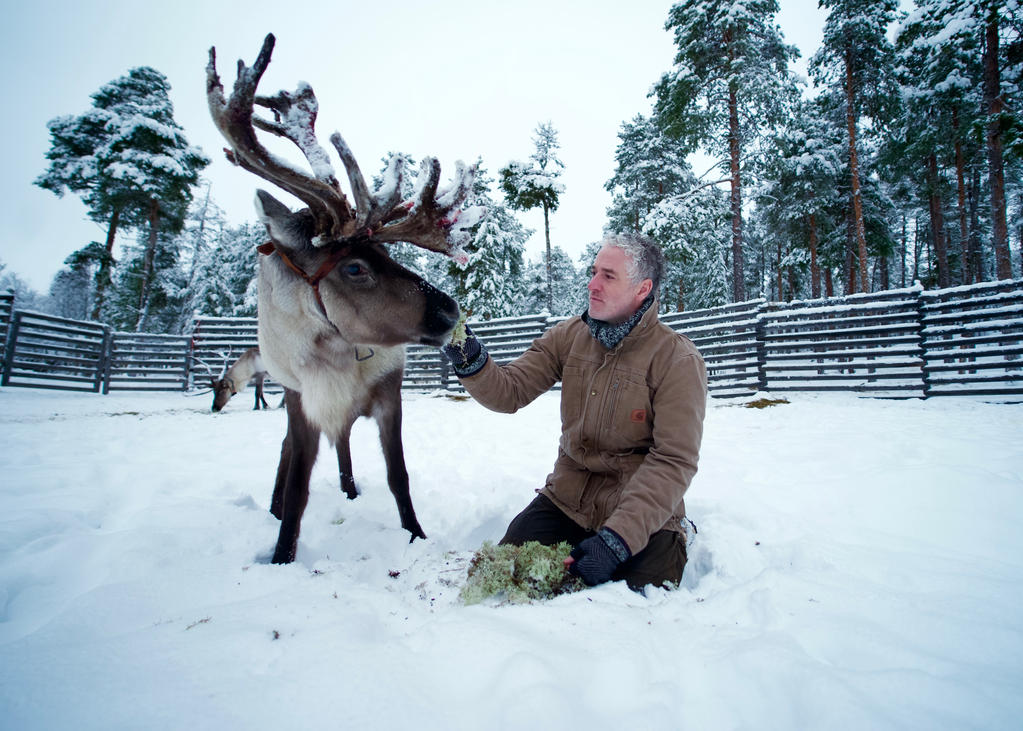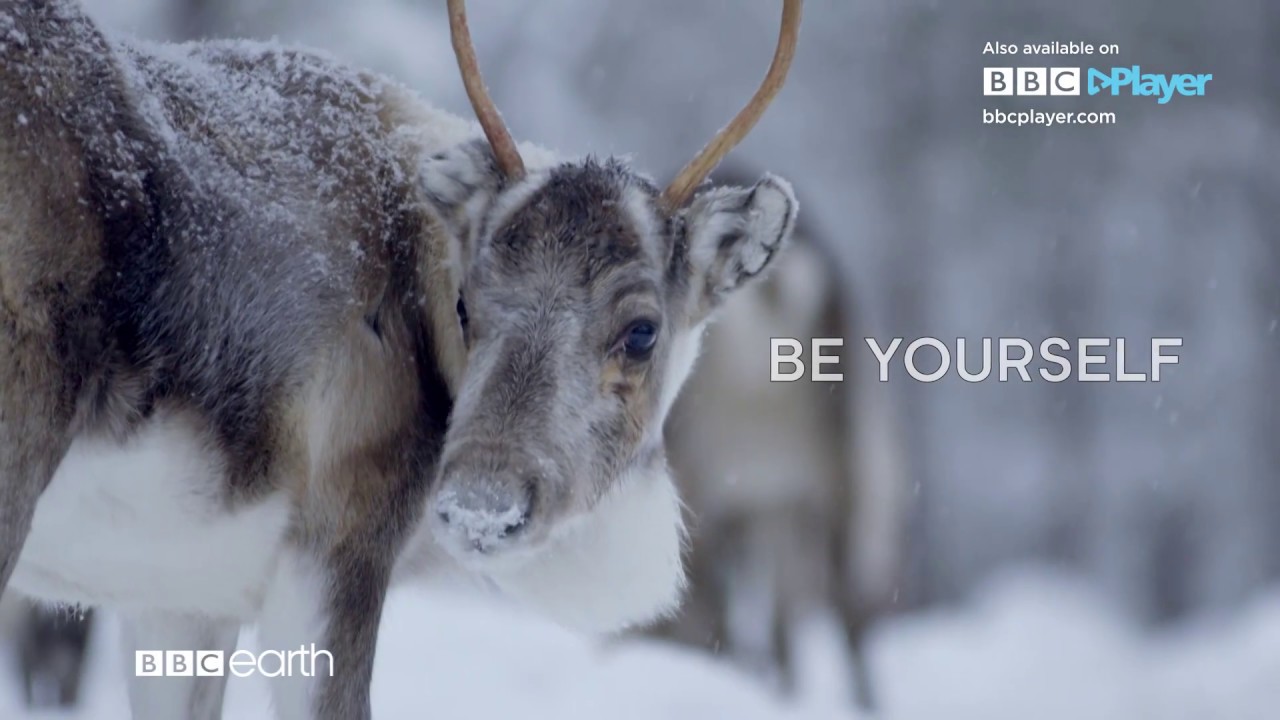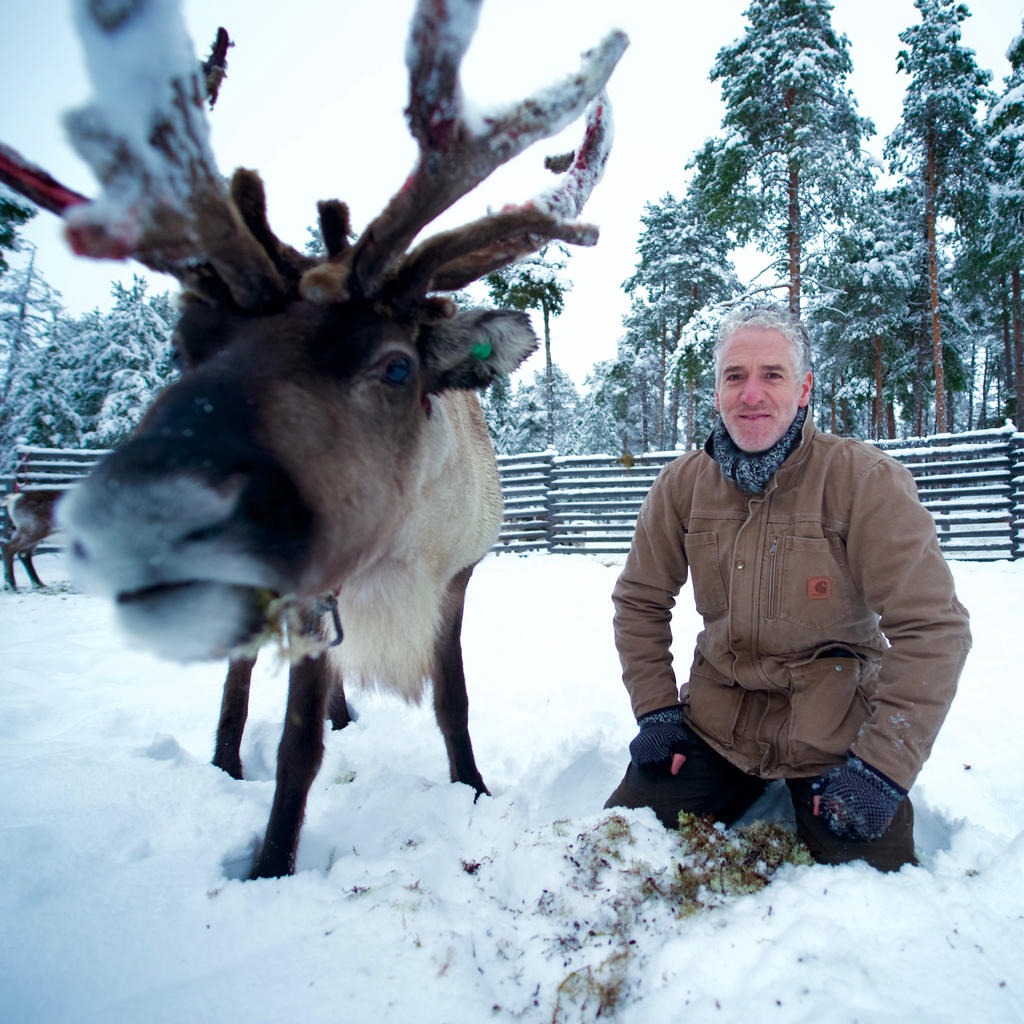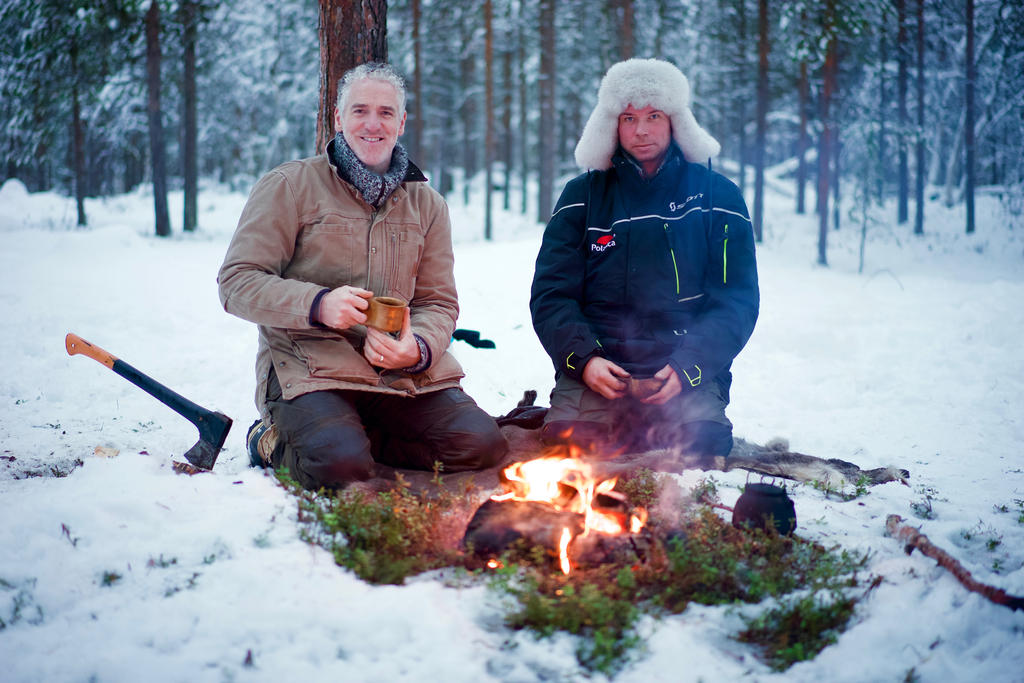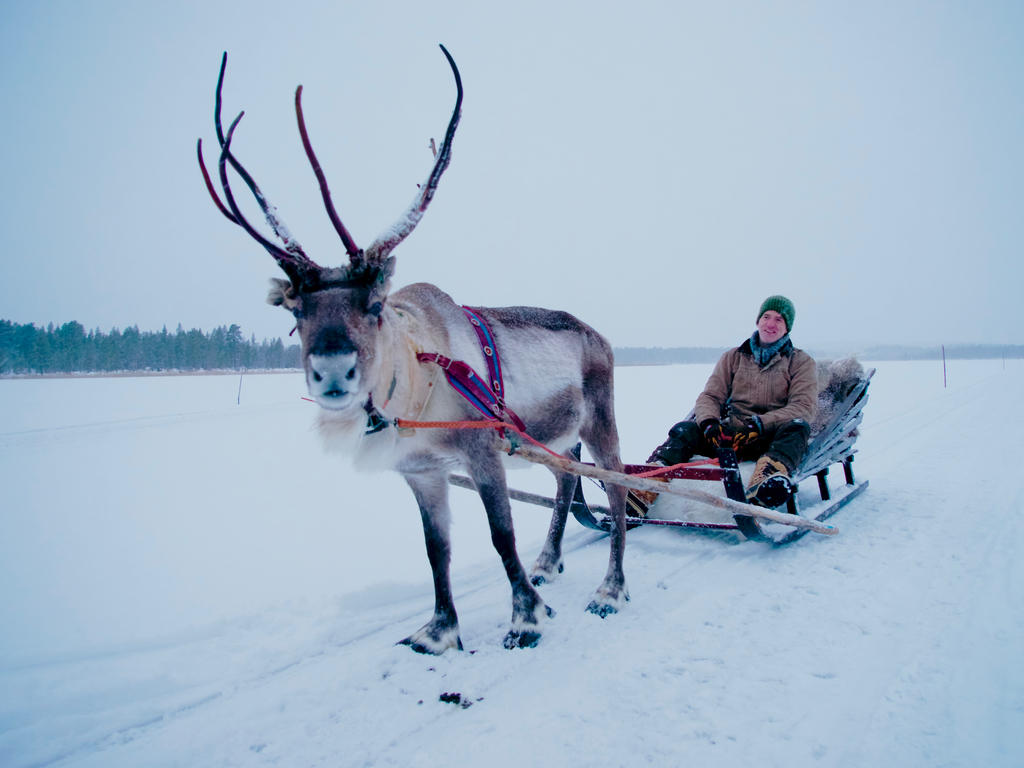Filmmaker and presenter Gordon Buchanan traveled to Lapland to shoot Reindeer Family & Me, about Europe’s only indigenous people, the Sámi, and their special bond with reindeer.
Scottish wildlife filmmaker Gordon Buchanan is no stranger to extreme environments, wild animals and indigenous peoples. Over his 20 year career, he has traveled the world capturing the trials and tribulations of life in wild habitats. In November 2017 he traveled to Finnish Lapland to shoot Reindeer Family & Me, the BBC2 Christmas special about one of Europe’s indigenous peoples, the Sámi, and their special bond with reindeer.
Our interview with Gordon continues after the trailer:
Back to the Arctic
To film series such as Life in the Snow and Polar Bear Town, the award-winning filmmaker has traveled previously to the Arctic and Antarctic, but this was his first time in Lapland.
— I’ve worked in the high Arctic several times before, but this was my first visit to such a heavily forested part. I love pine forests and the Arctic, so to combine both was truly magical. I loved it instantly. What blew me away was how wild and unspoiled the habitat seemed to be. Away from the roads, it was hard to find any evidence of people. I love places like that where you can almost imagine that humans don’t exist, Gordon says.
Lapland is the last wilderness in Europe, and Gordon wanted to capture the magic on film.
— It is easily the wildest part of Europe I’ve worked in, and I think one of the easiest places to make look beautiful on camera. There is a magical quality to the landscape and a real sense of remoteness. Things that are hard to find in the modern world.
Capturing the frozen north
Gordon worked alongside a number of people on the production, including the Sámi family at the center of the special. At the Petri Mattus Reindeer Farm in Inari, Finland, he found that there were more than just cultural differences between Scots and the Sámi.
— We had a thermal imaging camera that we could compare my blood circulation with that of Petri, our Sámi guide. My hands and face showed up blue, indicating a lack of blood flow, while Petri’s glowed red, showing that there is a huge physiological difference between someone who lives in the Arctic and someone who is just visiting.
For this production, Gordon used drones for shots previously relegated entirely to cranes or helicopters.
— Our drone was able to capture the most stunning images in the program. The types of shots that would have been logistically impossible only five years ago. To me, drones are the most exciting filmmaking tool around at present.
One of the reasons that Lapland is the edge of Europe’s frontier is the extreme weather, especially in the heart of winter. While this can produce some jaw-dropping shots, it doesn’t come without challenges. Or unexpected rewards.
— Keeping my hands and feet warm while spending long periods outdoors was the biggest challenge. To use the fine controls of our cameras, we could only wear thin gloves. My camera is a touchscreen, so I had to constantly take off my gloves to change settings. My feet, however, had no problem in the cold as soon as I started wearing my reindeer-hide boots. They were incredibly warm, even down at -27°C.
Filming in Lapland also comes with its own rewards:
— Riding along in a sleigh on my own being pulled by a reindeer in the most spectacular landscape day after day is pretty hard to beat, Gordon says.
Part of the solution
In addition to being a famous wildlife filmmaker, Gordon is an ardent conservationist. Climate change and human expansion drive the edges of the Lapland wilderness farther north, affecting plant life, wildlife and the people that live here. As Gordon has spent his career in wildernesses the world over, he feels deeply about efforts to preserve and protect the natural world.
— The issues are complex, as are implementing solutions, but what would fundamentally help is if each and every one of us cared more about the natural world than we do about buying things in life that we don’t really need. Also, if we accept that our mere existence and almost everything we do in life has a negative impact on the natural world, I think we’d use resources less selfishly. Sticking our heads in the sand about species and habitat loss is unacceptable. It’s a cliché, but we are all part of the problem, so we should all try our very best to be part of the solution.
Finally, we asked Gordon if he wanted to return to Lapland.
— I would love to come back. I’d like to spend more time looking for predators in Finland. Though I fear that current hunting and predator control policies would make visual contact with many predator species quite difficult. But I really loved my time there. I’d love to bring my family over to share the experience.



